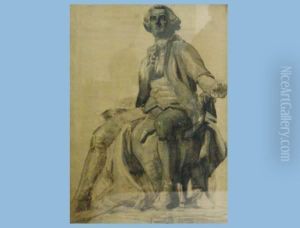Richard Kissling Paintings
Richard Kissling was a Swiss sculptor born on July 15, 1848, in Wolfwil, Solothurn. He is perhaps best known for his monumental works and statues that adorn public spaces in Switzerland. Kissling studied in Munich and Rome, where he was influenced by classical sculpture and the Renaissance masters. His education and travels helped him to develop a style that combined elements of neoclassicism with a sense of realism, which became characteristic of his work.
Kissling's career began to flourish in the late 19th century, a time when there was a significant interest in national identity and the commemoration of historical figures in Switzerland. He received numerous commissions for public monuments, which include statues, busts, and reliefs. Among his most famous works is the statue of Swiss national hero Wilhelm Tell, erected in Altdorf in 1895. This monument has become an emblematic representation of Swiss patriotism and is a testament to Kissling’s skill in capturing the spirit of historical narratives in bronze and stone.
Through his lifetime, Kissling produced a vast body of work and was recognized as one of the leading Swiss sculptors of his era. His sculptures often featured prominent historical and mythological figures, rendered with a balance of idealism and lifelike detail. Kissling’s contribution to the arts was not only in his sculptures but also in his role as a teacher, influencing a new generation of Swiss artists.
Richard Kissling passed away on October 19, 1919, in Zurich. His legacy is preserved in the public squares and buildings of Switzerland, where his works continue to be admired for their artistry and historical significance. Kissling’s art remains an integral part of Swiss cultural heritage and stands as a reflection of the country’s appreciation for historical commemoration through sculpture.
